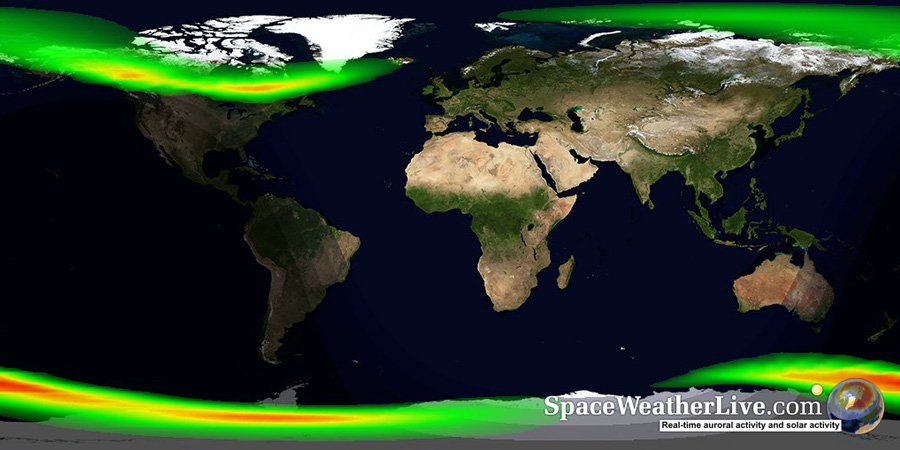Minor G1 geomagnetic storm
Wednesday, 10 July 2019 09:51 UTC

Its summer in the northern hemisphere and that means many of us are enjoying a well earned vacation. However, the same thing can be said about our Sun. She is taking it very easy with pretty much no noteworthy eruptions or other solar events to talk about during the past few weeks. We did have the brief appearance of a sunspot region that belongs to Solar Cycle 25 but it disappeared as quickly as it appeared. Make no mistake, we are likely still at or close to solar minimum. That said, we do have something to talk about today as we unexpectedly reached minor G1 geomagnetic storm conditions yesterday and today!
It all started two days ago around 18:30 UTC. A minor shock in the solar wind was observed by our systems back on 8 June. If you follow us on Twitter or have the SpaceWeatherLive Android or iOS app installed you might have seen the automated coronal mass ejection impact alert.
This wasn't expected and it could be an undetected coronal mass ejection or the leading edge of a coronal hole solar wind stream that formed a shock. Hard to tell but the first initial shock could have very well be a stealthy coronal mass ejection that slipped under the radar. It is hard to say for sure but what we do know for sure is that we are inside a high speed coronal hole solar wind stream since yesterday. The solar wind speed increased to over 600km/s and the north-south direction (Bz) of the interplanetary magnetic field has been pointing mostly southward which fuels the auroral ovals here on Earth. This propelled us up to minor G1 geomagnetic storm conditions yesterday at 20:28 UTC and today at 07:26 UTC for the first time since 8 June. Excellent news for high latitude aurora watchers who should remain alert for more auroral displays for the remainder of this day. Do follow the data live on this website if you are a high latitude sky watcher with dark skies! Good luck!
Note that the real time solar wind data displayed on the site right now comes from the ACE satellite and not DSCOVR. DSCOVR has entered in a safe-hold a little while ago. Recovery activities are underway but we have no information on what caused DSCOVR to enter safe-hold. We hope the DSCOVR team manages to find the issue and recover DSCOVR as soon as possible.
Thank you for reading this article! Did you have any trouble with the technical terms used in this article? Our help section is the place to be where you can find in-depth articles, a FAQ and a list with common abbreviations. Still puzzled? Just post on our forum where we will help you the best we can!
Latest news
Latest forum messages
Support SpaceWeatherLive.com!
A lot of people come to SpaceWeatherLive to follow the Sun's activity or if there is aurora to be seen, but with more traffic comes higher server costs. Consider a donation if you enjoy SpaceWeatherLive so we can keep the website online!

Space weather facts
| Last X-flare | 2025/03/28 | X1.1 |
| Last M-flare | 2025/03/31 | M1.2 |
| Last geomagnetic storm | 2025/03/27 | Kp5 (G1) |
| Spotless days | |
|---|---|
| Last spotless day | 2022/06/08 |
| Monthly mean Sunspot Number | |
|---|---|
| February 2025 | 154.6 +17.6 |
| March 2025 | 127 -27.6 |
| Last 30 days | 127 -25.7 |


